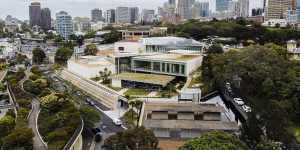
An aerial view of the Sydney Modern addition to the NSW Art Gallery.Brook Mitchell
It was one of many challenges they faced delivering Japanese architects SANAA’s vision of a nearly ethereal building with thin columns and walls of glass in the middle of a pandemic and record rains.
After running computer simulations to see how the entrance pavilion with its delicate columns would shake in an earthquake,engineers from Arup inserted 100 stainless-steel strips on Teflon under areas resting on the land bridge over the Eastern Distributor.
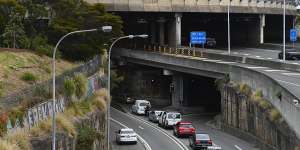
The view from a pedestrian bridge near Bourke street,Woolloomooloo.Kate Geraghty
These strips worked like a stainless-steel fry pan,said Andrew Phillips,a structural engineer and the project manager at Arup. The design allows the building to move six centimetres in each direction without damaging it,said project director Phil Irving from Crookes.
Combined with 7600 pieces of structural steel across the building’s 17,000 square metres,out of a total site of 24,000 square metres,they also allowed the gallery to withstand 2000 people dancing across three floors to leading music act Rufus Du Sol at Wednesday night’s opening party.
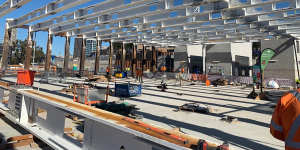
Column-free gallery space,which included beams measuring 32.6 metres in length and weighing 16 tonnes.Supplied
Phillips said:“SANAA’s buildings seem so delicate,the challenge we have is making sure the structure can support the building but still looks elegant.”
“We design buildings and we design bridges. We don’t usually design buildings on bridges.”
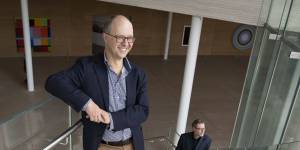
Structural engineers and Principals of Arup Andrew Phillips and Andrew Johnson.Wolter Peeters
SANAA’s proposal,designed to maximise an area that NSW Premier Dominic Perrottet described as dead space,meant more than 65 per cent of the new gallery was built on top of existing infrastructure including the land bridge and two oil tanks built in the 1940s.
Compounding the challenge was disastrous weather,said Mark Avery,Crookes’ general manager of new business and strategy. The project was completed on time and on budget despite three rounds of COVID-19 pandemic lockdowns,including where workers couldn’t leave their local government areas.
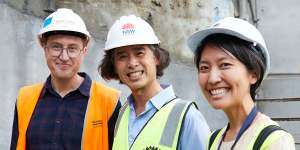
Artist Lee Mingwei on the site with architect Asano Yagi from SANAA and senior project engineer Jesse Moss from Richard Crookes Construction.supplied
Irving,Crookes’ project director said,to reduce the load on the land bridge,they used a lightweight concrete,about half that of usual concrete.
In the Yiribana gallery that also partly rests on the land bridge,the floor is natural wood,much lighter than concrete.
The new gallery also has a thin roof built from structural steel and green roofs that required layers of waterproofing to protect the galleries below. “The natural enemy of art is moisture,” said Irving. The gallery survived the record rains without a leak.
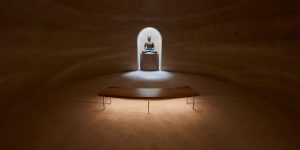
Installation view of Lee Mingwei Spirit House 2022. Art Gallery of New South Wales,Diana Panuccio
Another feat was building the Isaac Wakil gallery without columns. It is supported by a long span of steel,32.6 metres in length and weighs 16 tonnes.
One of the biggest challenges,said Irving,was building an underground rammed earth igloo or dome,an artwork by Taiwanese artist Lee Mingwei called Spirit House designed in consultation with SANAA. It was a first in a commercial or public space and had to meet additional safety standards.
Accessed through the external rammed earth wall on lower level 2,only one person can enter at a time to look at the Buddha. If the Buddha is holding a wrapped pebble,the visitor may take the stone home.
The Morning Edition newsletter is our guide to the day’s most important and interesting stories,analysis and insights.Sign up here.